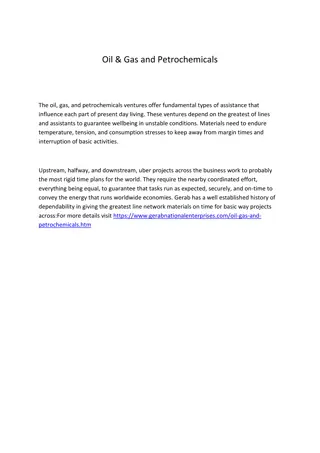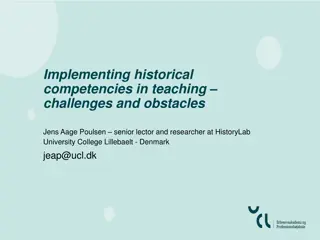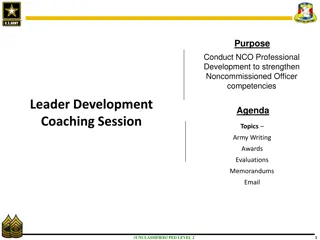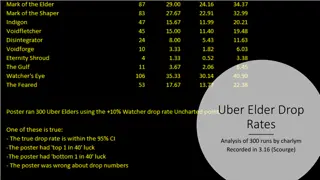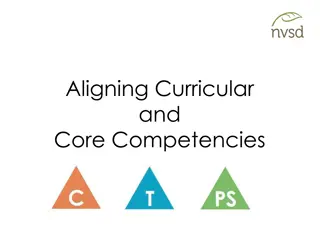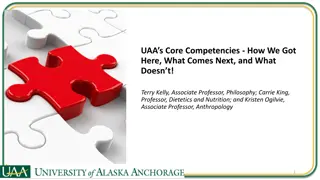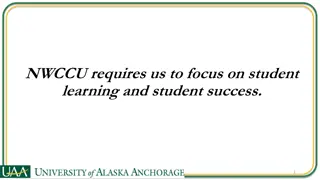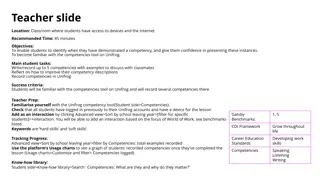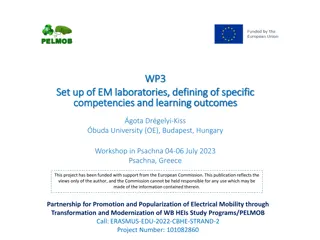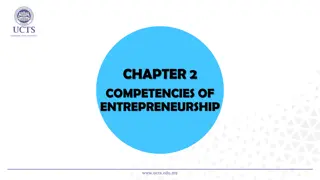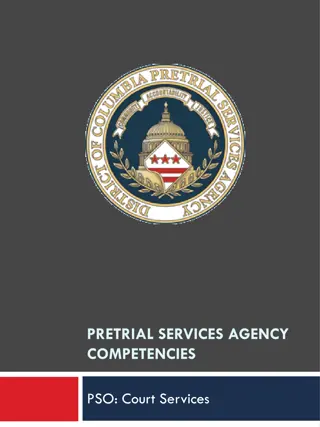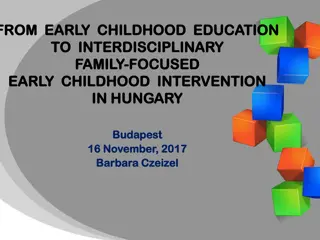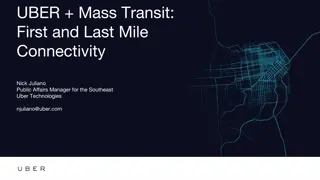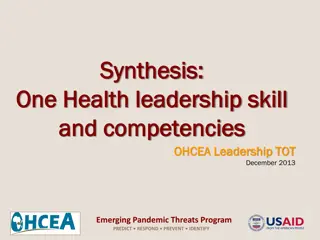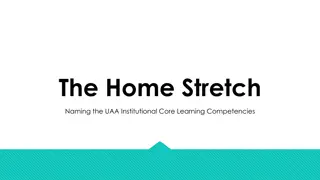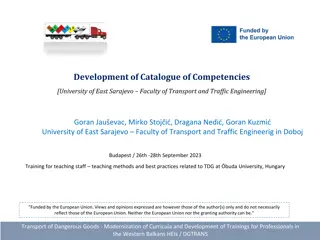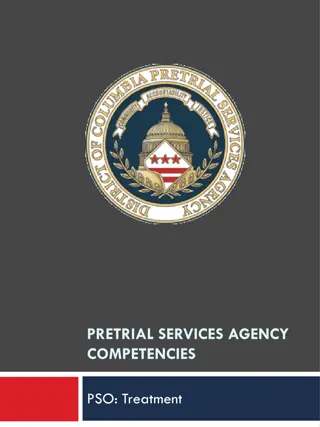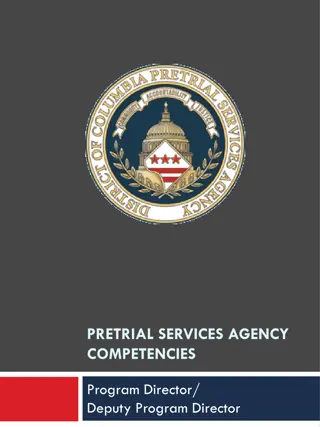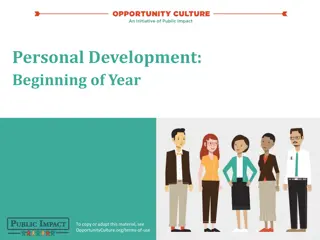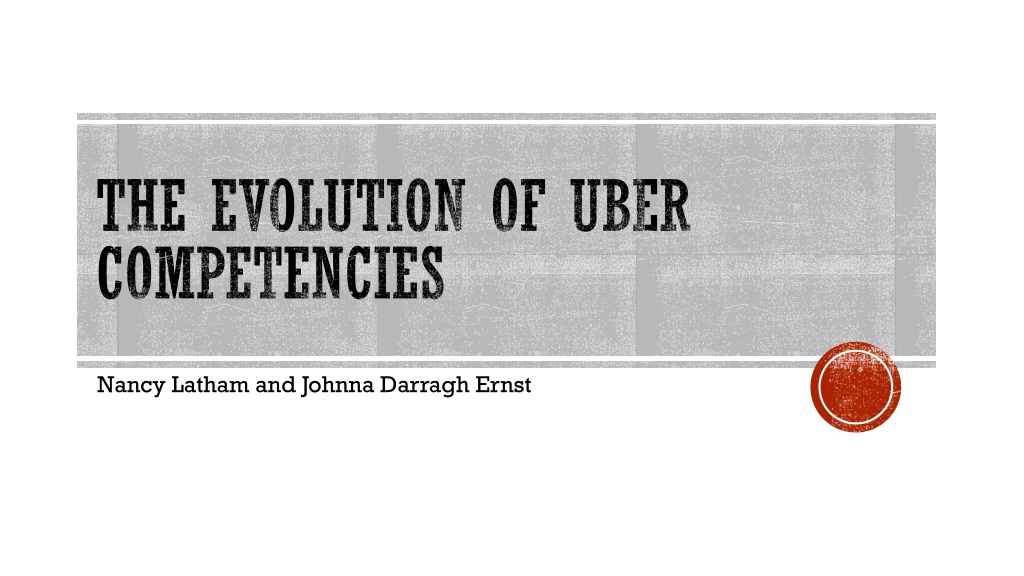
Exploring the Evolution of Competencies in Education
Discover the journey of developing competencies in education, from origins linked to grants aiming to enhance institutional partnerships, to exploring and defining competencies for effective professional practices in Illinois. Dive into the reorganization of benchmarks to establish essential knowledge, skills, and dispositions across different levels of employment.
Download Presentation

Please find below an Image/Link to download the presentation.
The content on the website is provided AS IS for your information and personal use only. It may not be sold, licensed, or shared on other websites without obtaining consent from the author. If you encounter any issues during the download, it is possible that the publisher has removed the file from their server.
You are allowed to download the files provided on this website for personal or commercial use, subject to the condition that they are used lawfully. All files are the property of their respective owners.
The content on the website is provided AS IS for your information and personal use only. It may not be sold, licensed, or shared on other websites without obtaining consent from the author.
E N D
Presentation Transcript
THE EVOLUTION OF UBER COMPETENCIES Nancy Latham and Johnna Darragh Ernst
ORIGINS: EPPI GRANTS EPPI Grants Grant opportunity through Illinois Board of Higher Education Goal to obtain support to deepen and strengthen partnerships between two and four-year institutions within the state of Illinois EPPI grants provided funds to support programmatic revisions needed to enhance articulation, including both course and process revisions Project Goal Examining processes and structures that would promote articulation between ISU feeder institutions: Heartland Community College, Illinois Valley Community College (IVCC) and Illinois Central College (ICC).
EPPI GRANT: OPPORTUNITY Cross-institutional articulation EPPI grant provided opportunity to explore the plans of study of all four institutions and develop processes that supported the direct transfer of 15 credit hours. Cross-institutional assessment Creating a system of program evaluation based on a shared measure that could serve all four programs assessment requirements and provide partnership level evaluation data to inform partnership logistics, direction, and growth. Initial goal: Remove barrier of transferring a course between institutions that housed program assessment by created shared system of program evaluation and assessment.
EXPLORING COMPETENCIES What are competencies? Specific, measurable, observable behaviors that reflected knowledge, skills and dispositions and distinguishing levels of professional practice Describe what a practitioner/student should know and be able to do at specific levels of ECE employment in Illinois. What do competencies provide? Opportunity for common language within a standard-based assessment system
DEVELOPMENT OF COMPETENCIES Reorganization of existing 347 Gateways benchmarks at Levels 2-5 Stage One: Categorization/Refinement 347 Gateways Benchmarks reorganized by position as defined by ExceleRate. Benchmarks were placed on strips in the middle of a table. Team members chose a random benchmark and indicated at what position or level of employment that skill, knowledge or disposition was essential for the practitioner to have, be able to do or demonstrate as defined by categories of Assistant Teacher (Level 2), Teacher (Level 3), Lead Teacher (Level 4), and Master Teacher (Level 5). Discussion plumb line: What fundamental knowledge, skills, and dispositions must practitioners have to support the healthy development and learning of young children and families at each specific professional level of practice Approximately three percent were identified as duplicates or unclear in the larger context and assigned to a parking lot for the purposes of this analysis.
DEVELOPMENT OF COMPETENCIES Stage Two: Compilation Sub-committee examined all of the benchmarks assigned to each professional level and coded the assigned benchmarks as to whether they pertained to knowing, doing, or leading. Each professional level was further sorted into the seven existing Gateways Content Areas. Sent out to the larger committee for validation and conformation.
DEVELOPMENT OF COMPETENCIES Stage Three: Competency Categorization Team members examined the benchmarks by content areas and professional practice levels (i.e. levels of knowing, doing, or leading). Examined and clustered by the Competency sub-committee and a competency statement for each cluster was drafted. The result of this process was 50 uber competencies
DEVELOPMENT OF COMPETENCIES Stage Four: Uber Competency Master List Validated list of 50 uber competencies was created, organized by the seven content areas, cross-tabbed by professional practice level. This list included each original benchmark that was used to inform the creation of the uber competency.
DEVELOPMENT OF COMPETENCIES Stage Five: Master Rubrics The uber competencies are informing the development of master rubrics. Master rubrics will take each competency and specifically describe what the behaviors, attitudes, and knowledge of it look like at specific levels of performance (i.e. distinguished, mastered, developing, unacceptable) if a practitioner is demonstrating that knowledge, ability to do, or ability to lead. Rubrics will serve as the measurement foundation assessment system. Rubrics allow the partnership to develop a shared measurement system, which can inform each program as to how we are preparing practitioners to meet the competencies.
CONNECTIONS: COMPETENCY WORK Anticipated consequences: System developed that clearly communicates essential knowledge, skills, and dispositions. Clarity in definition would support enhanced cross-institutional assessment practices. Data that emerges from assessment feeds back into programming, and strengthens capacity to support our students.
CONNECTIONS: COMPETENCY WORK Myriad of cross-system connections emerged from the competency work. Opportunity: unified language if two and four-year institutions are communicating from the same foundation, as established through competencies, there is a far greater likelihood that understanding, at least in terms of message intention, will occur (shift from course and standard to shared system of communication) Creates opportunities in terms of articulation at statewide level, as shared assessment rubrics alleviate blocks. Creates opportunities for meaningful data collection and curriculum enhancement/revision.
CONNECTIONS: COMPETENCY WORK Creates opportunities between entitled and direct pathways Clearly defined competencies with well-defined assessments create opportunities in terms of both training to credit pathways and life experience/assessment to credit pathways Creates opportunities for assessment and support for practitioners in the field. Directors in early childhood programs can use the competencies and related benchmarks to assess, support, and mentor staff, and then support individualized professional development by tailoring suggestions to assessed competency needs. Provides opportunities for badging, and more clearly defined professional development can be explored.

